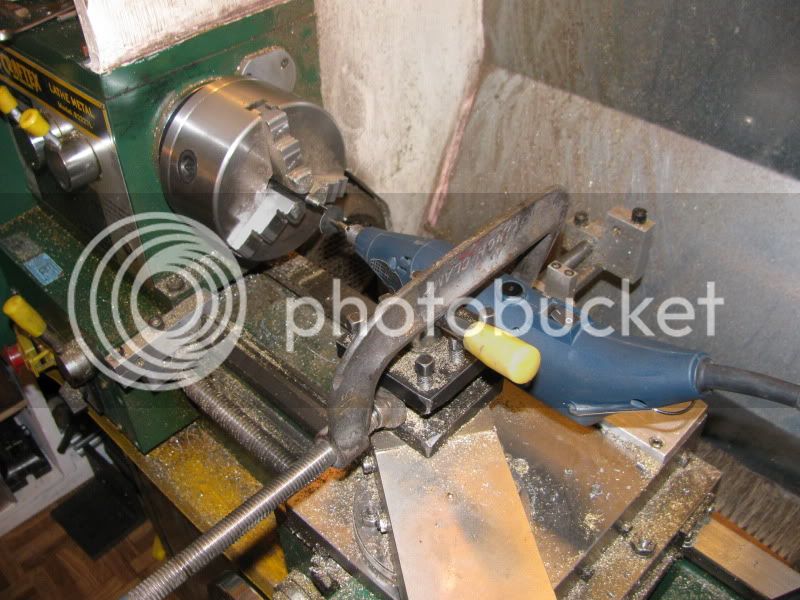A few things to consider.
On a real toolpost grinder, they go to great lengths to have a preloaded and true running spindle. Dremels etc, are no match for that. So don't expect the same sorts of results.
When toolpost grinding, you should only be removing tenths (0.0001") at a time, NOT thous (0.001"), so really, if you are feeding along the length with the saddle, you should be using the compound set at a shallow angle to give you the very fine forwards feed required. If you are feeding with the compound, say to grind an angle, you really need some sort of fine measuring on your cross slide (DRO or dial) to make sure you are feeding in only a tiny amount.
Myself, who has been toolpost grinding nearly all my working life at one time or another can get it wrong. I was informed by my instructor many many years ago that you should always grind with the direction of the wheel, so that is what I have always followed. Now having found some info on the web while casually surfing, I find he was wrong, and so of course, was I. You should always grind AGAINST the wheel rotation.
So really, to do external grinding, you need chuck reversal on your lathe. Don't worry, your chuck shouldn't come unscrewed as you should only be running the chuck slowly and the pressures involved are minuscule.
To plug up every orifice and cover up your lathe in dust sheets while grinding is really poppycock, as long as you don't get your slideways piled high with grinding dust and be doing it every day for years, you should have no worries. When turning red hot chips, you are making immeasurably worse items than grinding dust, and you don't cover up for that. Just a paper towel draped across the bedways, and a good wipe down afterwards should suffice.
Grindstones and mounted points come in all shapes, sizes and colours nowadays, so unless you know exactly what type of wheel or stone you have, it can be difficult to know exactly what to use. All I can say in that situation, if you are not getting good results, try a different stone. Also remember, larger stones require lower revs, True grinders don't run as fast as your Dremels etc, so you might be risking overspeeding your stone and having it blow apart as the bond gives way. Always prepare your safety precautions for that liability, a bit of stone is just as fast as a bullet under certain conditions, and can penetrate flesh just as far.
Whatever you are using, it MUST have the cutting face dressed up before use. Not only to get it running true, but to break off the surface granules of the stone and leave nice sharp edges for it to work correctly. If you have your grinding speeds correct, the stone should semi dress itself during use by discarding worn granules out of the bond and leaving sharp edges behind. If it starts to burn the face, things are not set up correctly.
These points I raised above are just a few bits of basic stuff to attempt to help you understand what you are getting into. It could go on forever.
What you must realise, grinding is a specialist trade, and it can take years to master. I am not a skilled grinder, far from it, but I have been on numerous specialist grinding courses required by my trade, and have done it most of my working life, and still I make mistakes, and can only skim the surface with the knowledge I have picked up, and here are you gents, coming along and expecting to do perfect grinding in a couple of hours.
I am not trying to put you off trying it out, but you must respect your limitations from the word go. Just because you get a couple of good finishes doesn't turn you into an expert overnight.
Read up as much as you can on the subject, and understand what you are reading, and just maybe, you might be able to get some sort of decent finish on your project.
Bogs









